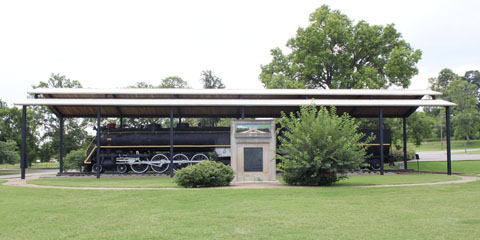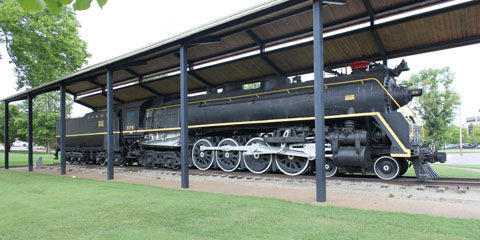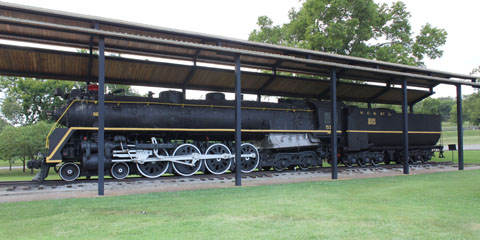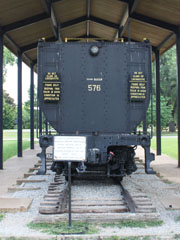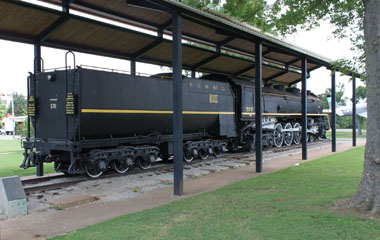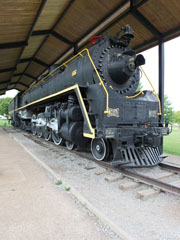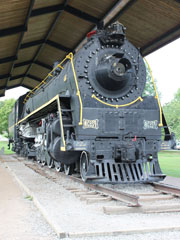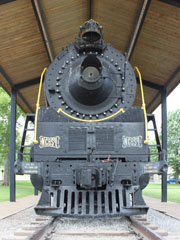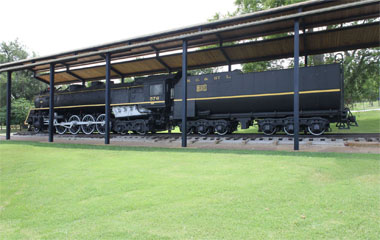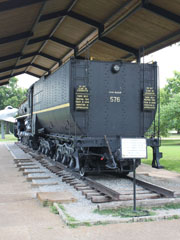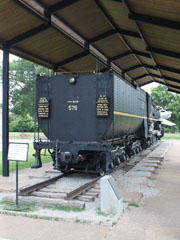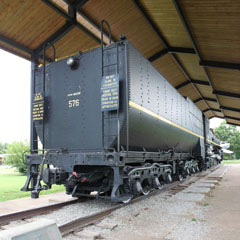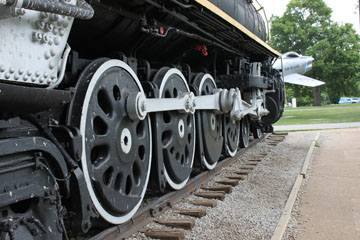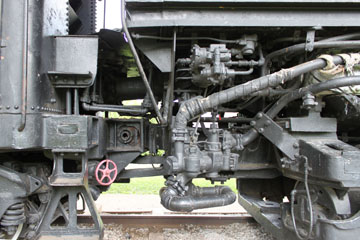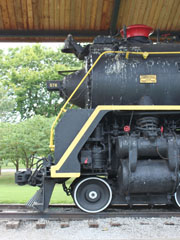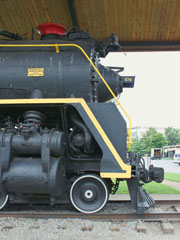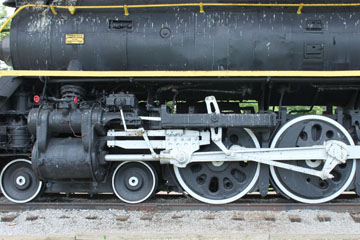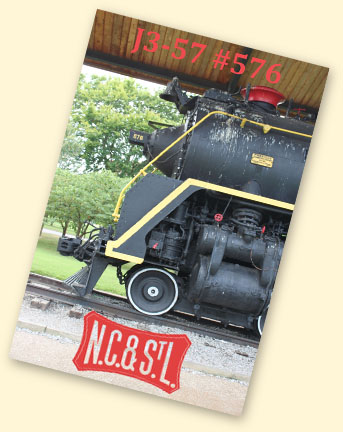

#576 is currently on display in Centennial Park in Nashville, TN. It is one of twenty J3 class Northern 4-8-4 type locomotives built for the Nashville, Chattanooga & St. Louis Railroad by Alco in 1942 and 1943 (#570-#589). The red painted smokestack is a uniquely NC&StL feature.
The J3 was based on the railroad's J2 class (#565-#569) designed by Clarence Darden, NC&StL's Chief Mechanical Officer. Also built by Alco in 1930, these were the first 4-8-4s to operate in the South. The first 4-8-4 was built by Alco, in January 1927 for the Northern Pacific and was therefore named a "Northern" type. However, in the South, they were referred to as "Dixies".

As delivered in 1942, the first ten J3s, including #576, had a streamlined nose and wide skirts but, during WWII, the streamlining was removed to make servicing easier, and the solid cone over the smoke box was replaced by a smaller one mounting the headlight. The final ten J3s were delivered without the streamlining in 1943.
Streamlined engines were called "Yellow Jackets" for the wide yellow stripe on the skirts over the running gear. When the skirts were removed, they were called "Stripes" after the thin line of paint that replaced the wide stripe.
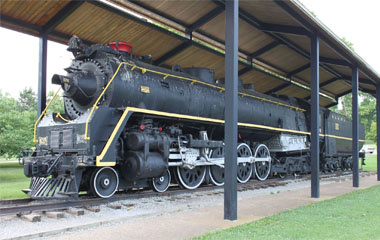
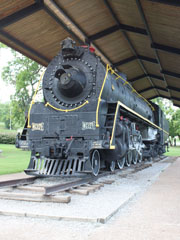
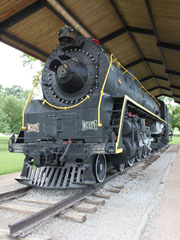
Both the J2 and J3 had one-piece cast-steel frames, with comparatively clean lines resulting from the frame brackets holding auxiliary piping normally hung on the boiler.
They were designed to haul heavy passenger trains and high priority freight trains.

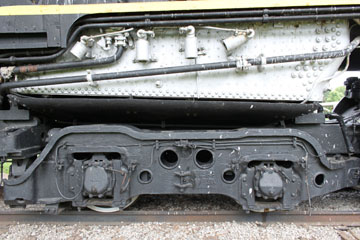
The "semi-Vanderbilt" tender design was unique to the NC&StL. Of riveted construction with a single cast frame, its two Commonwealth six wheel trucks were equipped with Timken roller bearings.
At 285,000 lbs light, the tender was larger than the J2's and 96,000 lbs heavier. It held 1,500 gallons of water, 50% more than the J2, and 16 tons of coal.
Above, note the four overfire jets on each side of the firebox. Steam operated, these introduced additional air to aid combustion. They were operated by the fireman and were designed to increase fuel efficiency as well as to reduce smoke exhaust emitted in built up areas.
The J3 had a 77.3 sq ft grate and, at 454 sq ft, the firebox was 10 sq ft larger than the J2. The firebox heating surface included 97 sq ft of thermic syphons and 19 sq ft of arch tubes. The 1,782 sq ft superheating brought the total heating surface to 5,985 sq ft.


The view above from the fireman's side shows the underside of the deck apron (top right), the stoker feed connection (upper right) and radial buffer (centre right). The stoker engine was housed in the hinged cabinet on the far right. In the centre of this photo is the feedwater heater pump. The J3 was fitted with a Worthington type 4-½ S feedwater heater and type E superheater. Superheated steam was used to run all steam appliances, including the whistle.
Below centre, the Nathan injector is on the engineer's side of the locomotive.
Above, the J3's 70" Boxpok drivers were all fitted with sealed Timken roller bearings. The first two driver axles were also equipped with lateral-motion axle boxes, and the class soon acquired the nickname "Gliders" because of the resulting smoothness negotiating curves of up to 20°.
In terms of size, the NC&StL's "Dixies" were shorter and smaller than most other roads'
4-8-4s. The driver wheelbase was 18' 3" and the engine wheelbase was kept to 86' 6" in order to permit the engines to be turned on the railroad's 90' turntables.
#576 weighs 400,500 lbs, 228,000 on its drivers. The addition of cab extensions increased the J3's engine weight by 18,500 lbs compared to the J2. It has 25" x 30" cylinders with Walschaert valve gear and, operating a boiler pressure of 250 psi, it delivered 56,920 lbs tractive effort.
Designed to operate at 80 mph, a successful test run of a J3 actually reached 110 mph. #576 initially ran between Nashville, Chattanooga and Atlanta, GA, but later also ran between Nashville and Memphis. After WWII, the J3s were relegated to lesser passenger and freight trains.
By September 1952, all the J3s had been withdrawn from service and, in September 1953, #576 was officially turned over to the City of Nashville.
It is now planned to restore the locomotive to operation with the first trips under steam in 2020 or 2021.

Above, the transom from the entrance to the NC&StL's head office in Nashville has been preserved on a plaque near #576.
Chartered as the Nashville & Chattanooga Railroad in Nashville in 1845, it was the first railway to operate in the state of Tennessee. After absorbing other roads, in 1873, it reincorporated as the NC&StL, but its line never actually reached St. Louis.
The Louisville & Nashville then gained control in 1880, although the railroads operated separately until merged in 1957.


